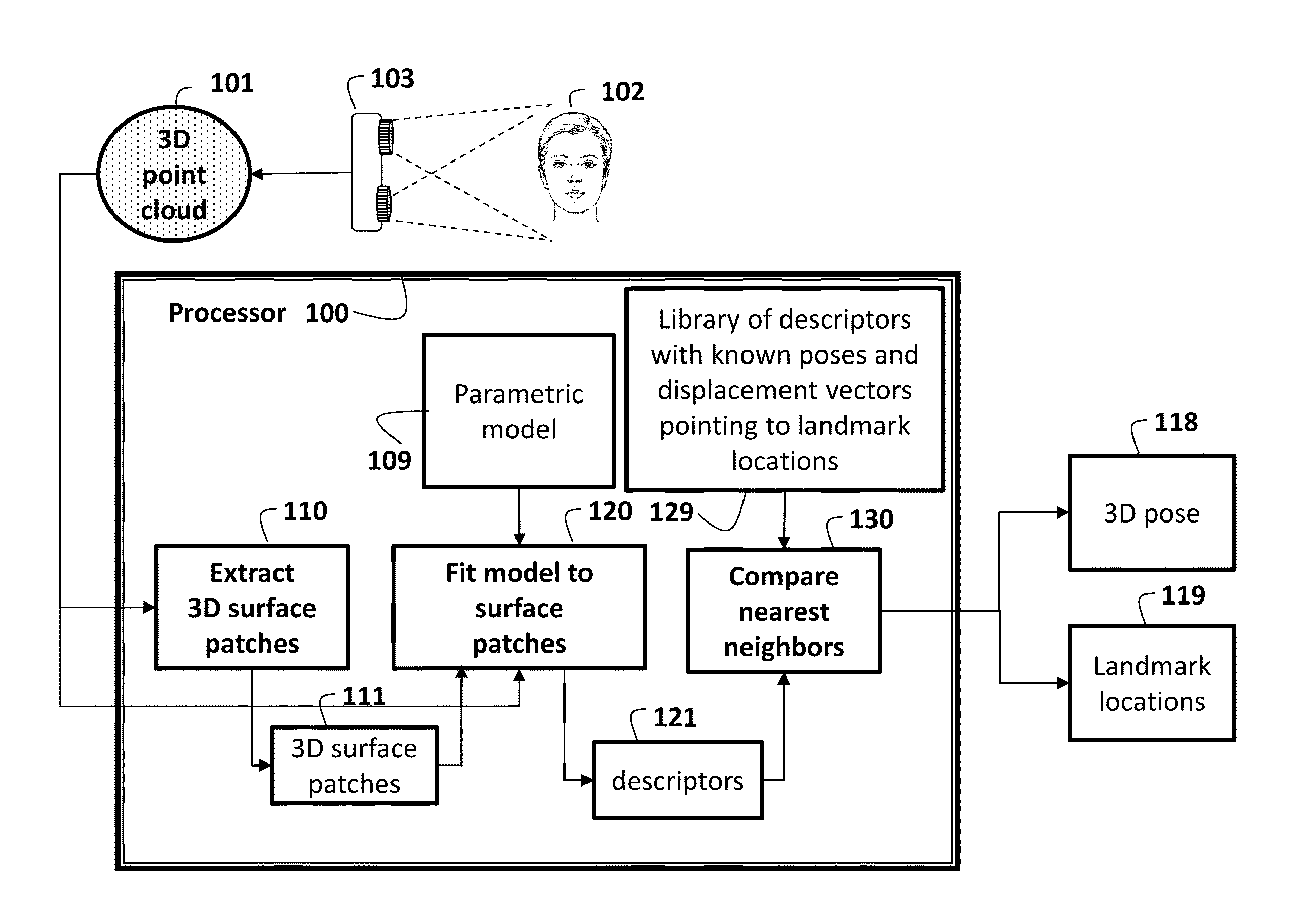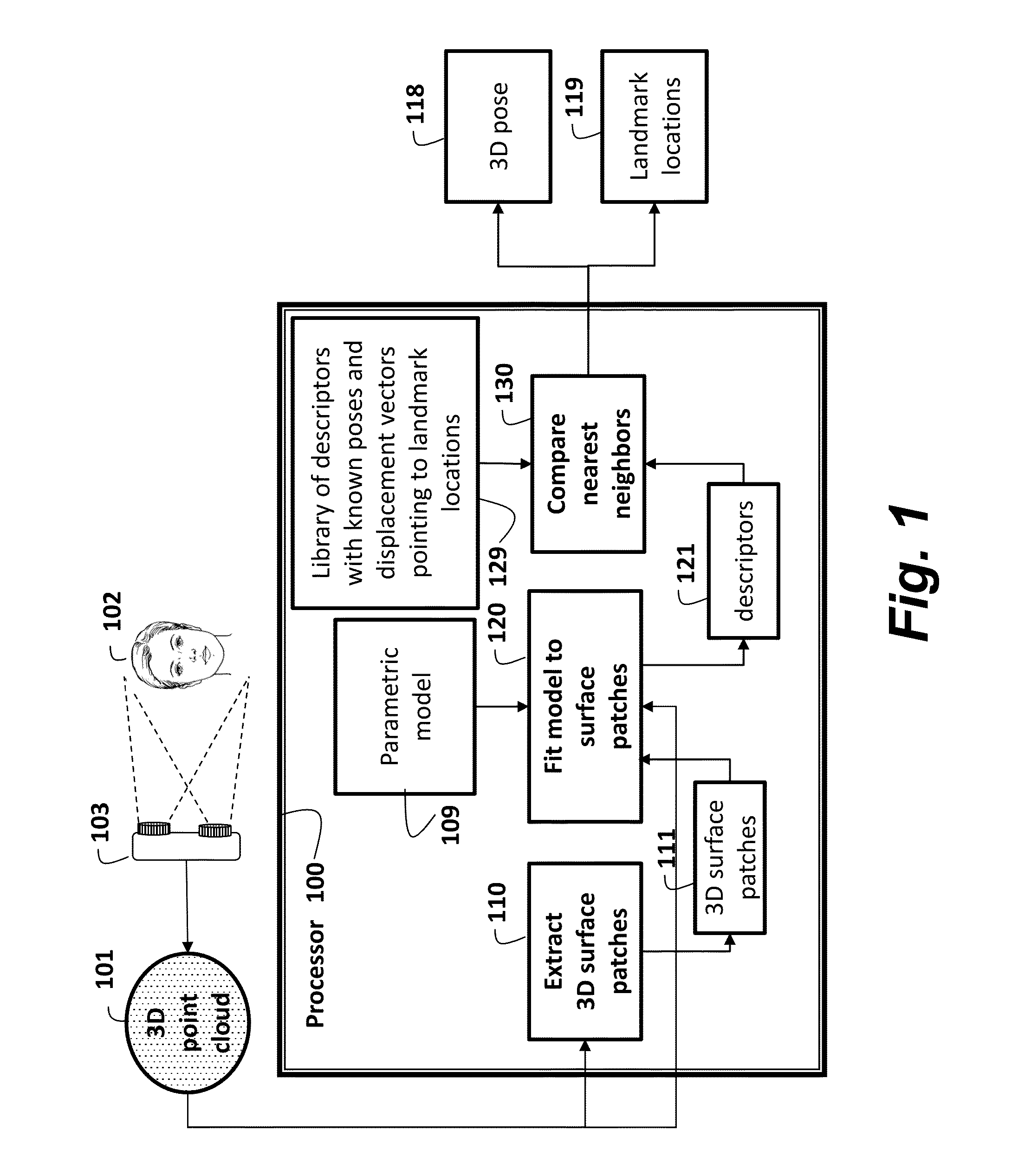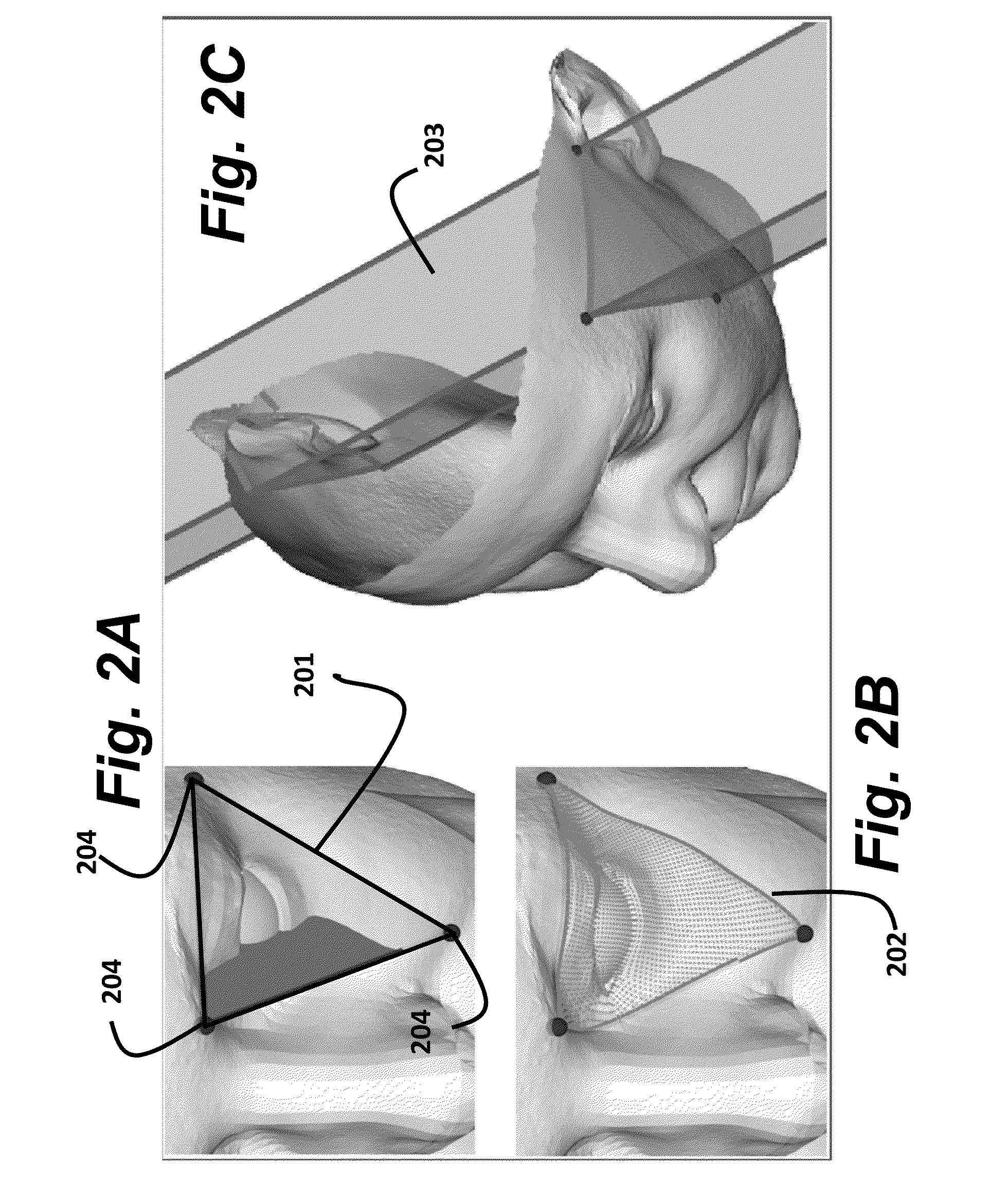Method and System for Determining 3D Object Poses and Landmark Points using Surface Patches
a technology of surface patches and landmark points, applied in the field of computer vision, can solve problems such as reducing accuracy
- Summary
- Abstract
- Description
- Claims
- Application Information
AI Technical Summary
Benefits of technology
Problems solved by technology
Method used
Image
Examples
Embodiment Construction
[0029]System and Method Overview
[0030]As shown in FIG. 1, embodiments of the invention provide a method and system for automatically determining a 3D pose 118 and 3D locations 119 of, e.g., facial landmarks of a head 102. A 3D point cloud 101 is obtained. The means for obtaining can be, e.g., by computing the 3D point cloud from a depth image acquired by a depth sensor 103. From the 3D point cloud, the method extracts 110 3D surface patches 111. A parametric model 109 is fitted 120 to each 3D surface patch. Parameters used to fit the surface patch are used as a descriptor for the patch, e.g., in the form of a feature vector. The information that has been extracted from the observed 3D point cloud is thus contained in a set of descriptors 121 of all of the extracted surface patches 111. An approximate nearest neighbor algorithm is used to determine a set of correspondences between the set of descriptors of the patches extracted from the 3D point cloud and descriptors of similar surfa...
PUM
 Login to View More
Login to View More Abstract
Description
Claims
Application Information
 Login to View More
Login to View More - R&D
- Intellectual Property
- Life Sciences
- Materials
- Tech Scout
- Unparalleled Data Quality
- Higher Quality Content
- 60% Fewer Hallucinations
Browse by: Latest US Patents, China's latest patents, Technical Efficacy Thesaurus, Application Domain, Technology Topic, Popular Technical Reports.
© 2025 PatSnap. All rights reserved.Legal|Privacy policy|Modern Slavery Act Transparency Statement|Sitemap|About US| Contact US: help@patsnap.com



